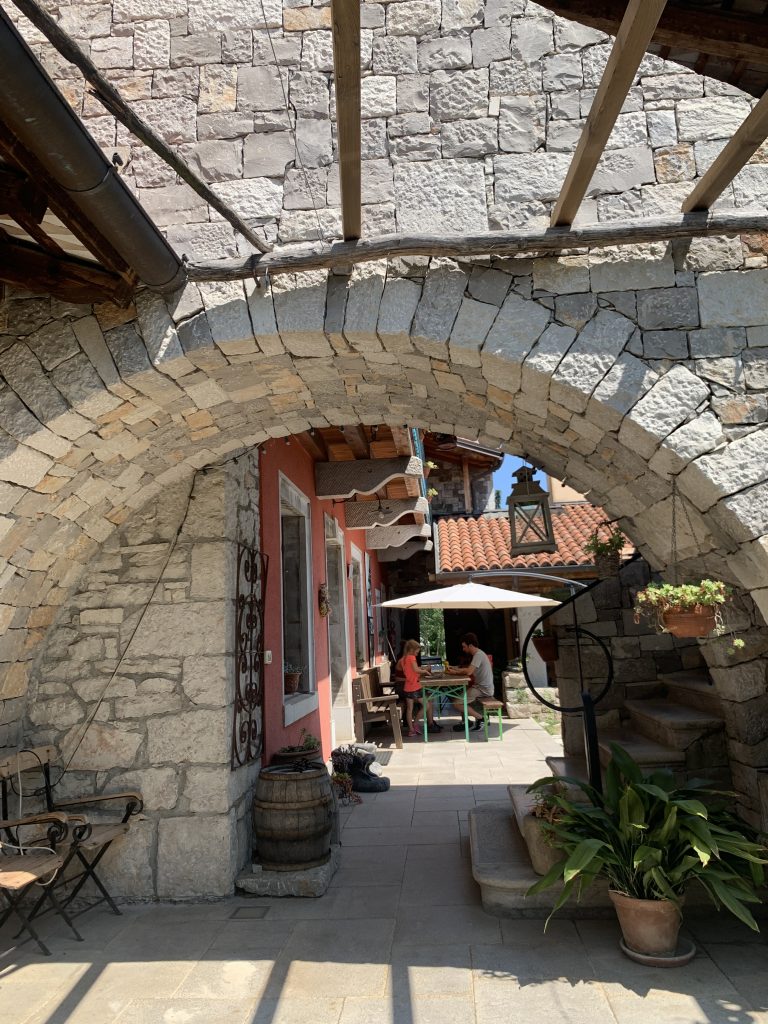by Alessandra Ressa
Everyone knows Grotta Gigante, the largest and most visited tourist cave in Trieste, but surprisingly few are aware of another underground marvel: the Torri di Slivia Cave (Grotta delle Torri di Slivia). Not only is it just as stunning, but it is also more easily accessible and definitely more fun to reach. Over 100 meters deep, with wide and richly adorned chambers, this is truly one of Trieste’s most beautiful caves and best-kept secrets.
Located in the charming village of Slivia, near Aurisina, in the heart of Carso, it was discovered by early cave explorers in the late eighteenth century and named after its many beautiful stalagmites resembling towers.
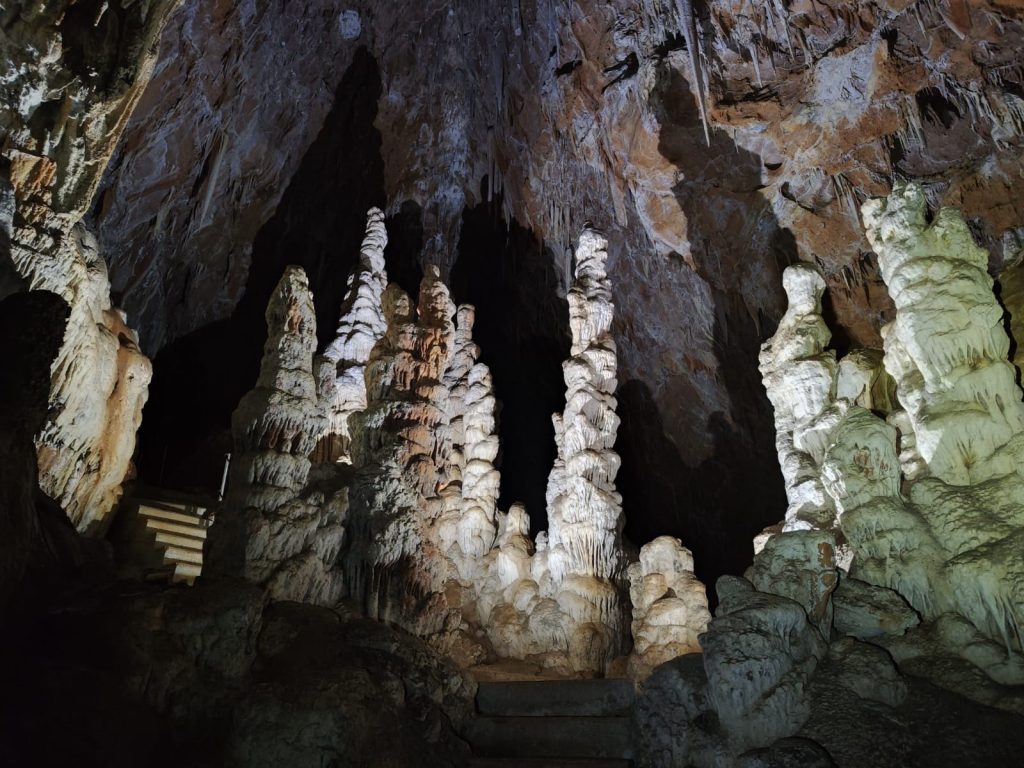
As one of the earliest caves discovered in Carso, it holds the number 22 among the over 3,000 registered subterranean wonders, being the 22nd cave to be discovered and registered in Friuli Venezia Giulia. The first explorers accessed it through a deep, vertical hole formed by a collapsed roof.
After hearing so much about it, my fellow cavers and I were eager to descend into that same dark hole. Equipped with strong ropes and modern caving gear, it felt manageable—sort of. It’s hard to imagine those early explorers on swing-like planks, lowered by traditional ropes, wearing woolen hats instead of helmets, and navigating with only candlelight. How did they survive?
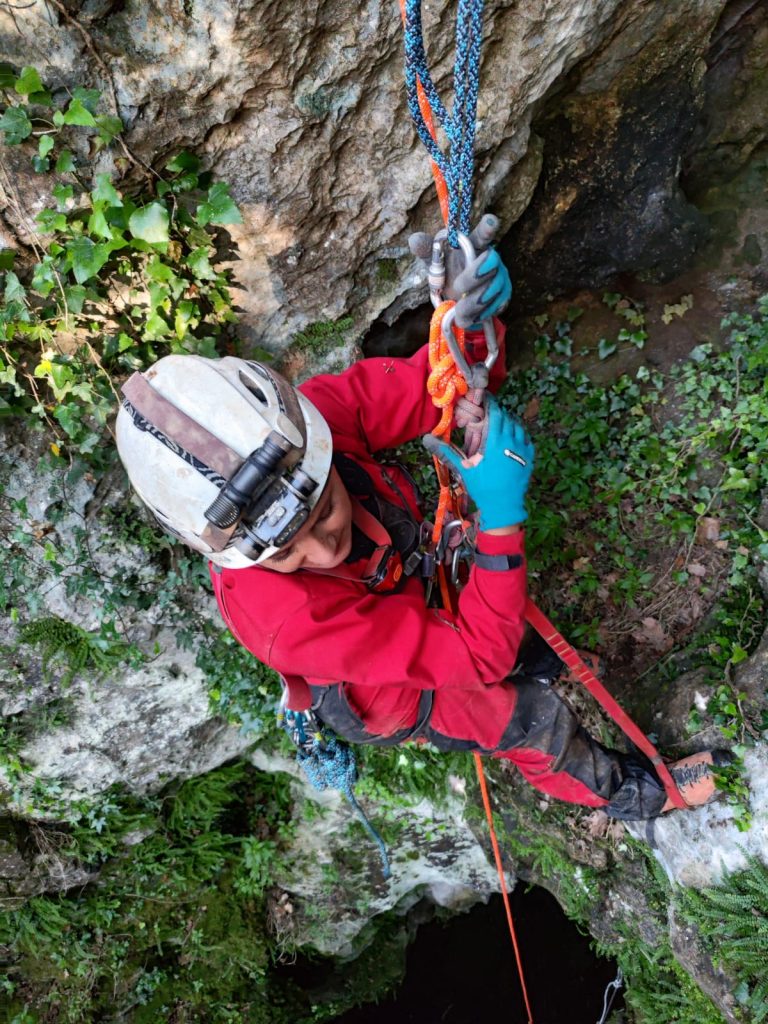
After safely rigging the initial descent and anchoring the ropes for those following me, I enjoyed the final 35-meter fast ride to the bottom of the pit.
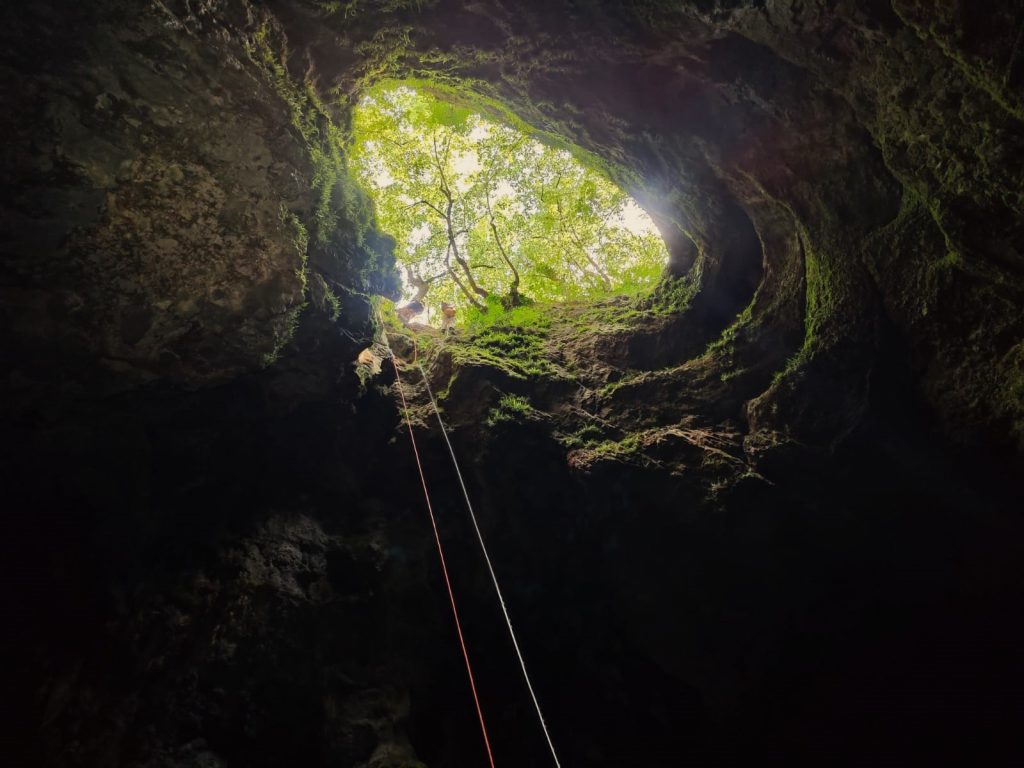
We looked up at the beautiful opening, where sun rays and trees guarded this impenetrable world. The little light that reaches the bottom has covered the rocks in a thin, slippery layer of green moss. We collected frogs and toads that had fallen into the pit. They stared at us helplessly, too weak to run away, and we secured them in a bag to be carried out after our visit.
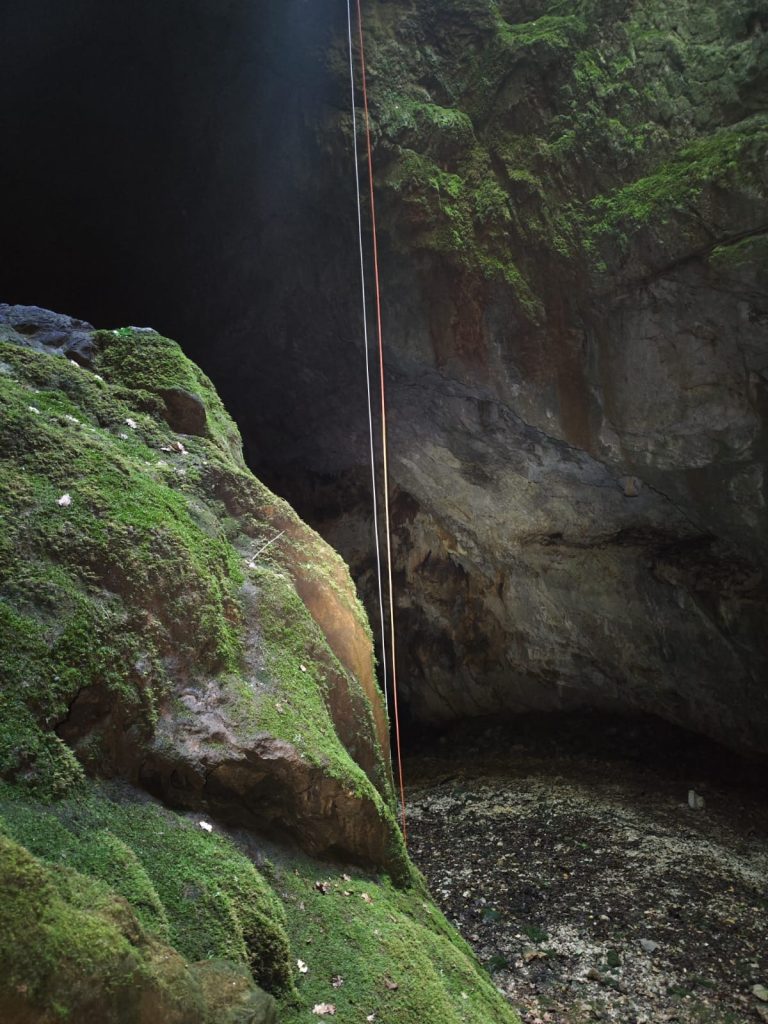

Friends reunited and animals saved, it was time for exploration. We marveled at the chambers’ beauty, some with incredibly high ceilings and amazing formations. A series of rope climbs led us to the most beautiful hall, famous for its eight tower-like stalagmites of different heights. For the lucky few who use ropes, the cave offers more treasures, including long, hidden sloping passages carved by ancient waters, marked by abundant traces of early explorers using smoke from carbide lamps.
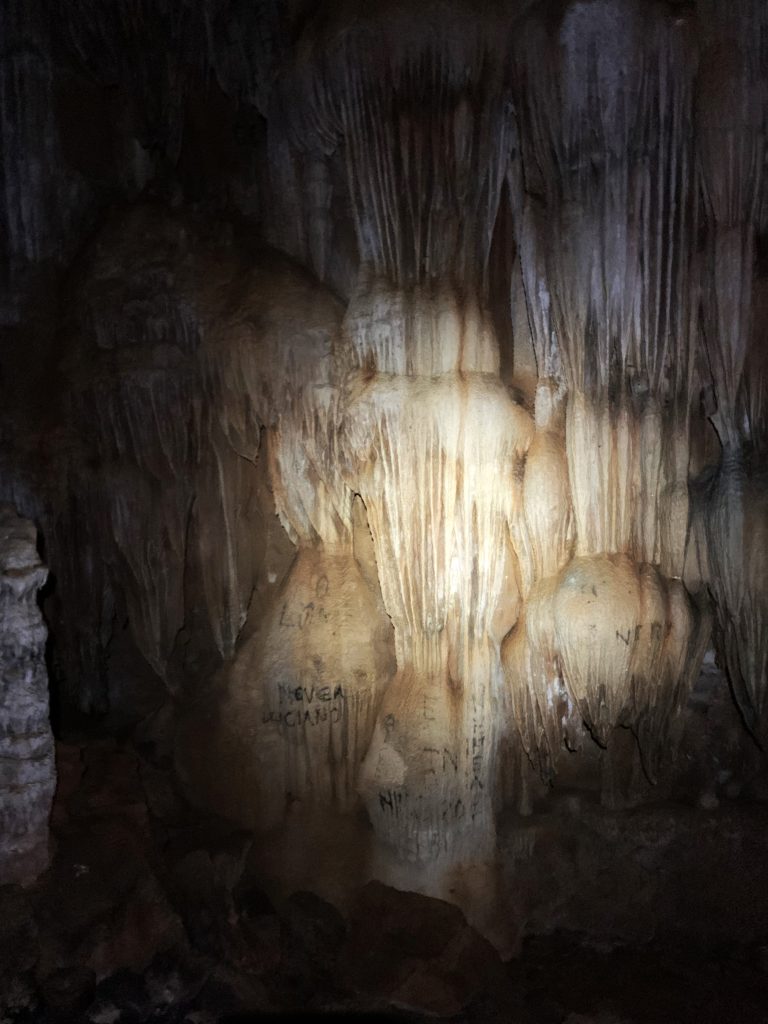
These lamps, used until the 1980s, improved peripheral vision in complete darkness. The exothermic reaction of carbide with water produced heat, staving off hypothermia. Today, they are rarely used due to their pollution. The smoke from the flame was used for graffiti in caves, which, although historical, is an eyesore and cannot be removed.
Luckily, for those without caving experience, a large portion of Le Torri di Slivia is accessible on foot thanks to a second entrance created in the 1960s. This tourist entry, through a metal door in the surrounding woods, features a cement path with 200 stairs, offering a partial but adventurous visit. An underground descent of approximately 60 meters takes visitors to the heart of this magnificent cave.

The best part of this visit is the journey to the entrance on a unique vehicle: half train, half tractor. The agribus is part of the experience. The land, including the cave, is owned by Corrado Greco, a Triestino of the Slovenian minority. He will drive you to the cave and give a guided tour, focusing on its preservation and protection.

Corrado Greco also owns a beautiful farm and B&B named after the cave. The traditional stone and wood Carso farmhouse has four bedrooms with ensuite bathrooms. Although it does not offer meals, it functions as an osmica, serving cold cuts, homemade cheese, and other delicious Carso foods at specific times of the year. Check the website for dates. To visit the cave, you need to book in advance and purchase a ticket. The price is affordable, and the experience unforgettable. The farm is easily reachable by public transportation. To book your tour: Azienda Agricola Le Torri di Slivia, Aurisina Cave 62/A, Duino Aurisina (Trieste), mobile +39 338 3515876, www.letorridislivia.net. For a unique treat, ask Corrado about the special aperitivo in the cave, where you can taste the best local wines and Carso delicacies.
